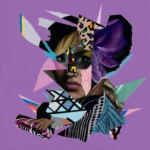
How to Organize Your NFTs by Blockchain, Type, or Marketplace
In the NFT space, fragmentation is a familiar pain point.
As artists and collectors, we’re minting, buying, and trading across a growing constellation of blockchains and marketplaces such as Ethereum, Tezos, Avalanche, OpenSea, Rarible, Objkt, and more.
The result? Our portfolios are scattered, our curation options are limited, and our ability to present a unified digital identity is compromised.
But what if you could bring all your NFTs together, organize them with precision, and showcase them exactly as you intend, regardless of where they were minted or sold?
Let’s explore how to organize your NFTs by blockchain, type, or marketplace, leveraging the latest aggregation tools and best practices for a streamlined, professional, and impactful portfolio.
Key Takeaways
- Aggregation Platforms Solve Fragmentation: Tools like ILUNAFRIQ let you consolidate NFTs from multiple blockchains and marketplaces into a single, organized portfolio, eliminating manual tracking and scattered collections.
- Strategic Organization Boosts Impact: Curating your NFTs by blockchain, type, or marketplace enables professional presentation, efficient management, and targeted promotion—crucial for artists and collectors alike.
- Customization and Flexibility Are Essential: Personalized galleries, privacy controls, and adaptable tools empower you to showcase your NFTs to the right audiences and stay ahead in the evolving NFT landscape.
Why NFT Organization Is No Longer Optional
For those of us deep in the NFT ecosystem, the need for simple organization is obvious.
Whether you’re an artist with a multi-chain presence or a collector with a diverse array of assets, the ability to curate, filter, and present your NFTs is crucial for:
- Professional presentation: A cohesive, well-organized portfolio is essential for attracting collectors, collaborators, and curators.
- Efficient management: Quickly locate, update, or promote specific works without sifting through multiple wallets and platforms.
- Targeted promotion: Share tailored collections with specific audiences, maximizing exposure and engagement.
- Streamlined sales: Direct potential buyers to the right pieces, regardless of where they’re listed.
The challenge? Until recently, true cross-chain, cross-marketplace organization was a manual, time-consuming process and was one that often required spreadsheets, multiple browser tabs, and a lot of patience.
The Fragmentation Problem: Blockchains, Marketplaces, and Beyond
Let’s be honest: the NFT landscape is only getting more complex. Each blockchain brings its own standards, wallet requirements, and community dynamics.
Each marketplace has its own curation tools, listing processes, and audience reach. If you’re active on more than one chain or platform, you know the drill:
- Multiple wallets: Managing keys and assets across MetaMask, Temple, Phantom, and others.
- Diverse standards: ERC-721, ERC-1155, FA2, and more.
- Marketplace silos: OpenSea, Rarible, SuperRare, Objkt, Foundation – each with its own interface and discovery mechanisms.
This fragmentation makes it difficult to present a unified portfolio, track your holdings, or even remember where a particular piece is listed.
Related: What is ERC-6551
Aggregation Platforms: The New Standard for NFT Organization
Aggregation platforms like ILUNAFRIQ have changed the game.
By integrating with multiple blockchains and marketplaces, they allow you to consolidate your NFTs into a single, customizable interface.
This unified view makes it easy to manage, curate, and showcase your entire collection without jumping between platforms.
No more juggling links or sending collectors on a scavenger hunt as your entire portfolio is visible, organized, and ready to share.
Let’s break down how you can leverage these platforms to organize your NFTs by blockchain, type, or marketplace.
How to Organize Your NFTs by Blockchain
Why it matters:
Blockchain-specific organization is essential for artists and collectors who want to highlight their presence on particular chains, track chain-specific trends, or manage assets with different technical requirements.
How to do it:
- Connect your wallets: Link all relevant wallets (MetaMask, Temple, etc.) to Ilunafriq.
- Automatic aggregation: The platform will scan and import your NFTs from supported blockchains like Ethereum, Tezos, Avalanche, Flow, ImmutableX, and more.
- Filter and sort: Use built-in filters to view NFTs by blockchain. This is especially useful for:
a. Showcasing chain-specific collections (e.g., “My Tezos Editions”)
b. Managing gas fees and transaction histories
c. Preparing for chain-specific drops or collaborations - Custom galleries: Create blockchain-focused galleries with unique URLs for targeted sharing which are ideal for collectors or communities interested in a specific ecosystem.
Pro tip:
Use blockchain filters to identify gaps in your portfolio or to plan cross-chain marketing campaigns.
Organizing by Type
Why it matters:
NFTs are now more than just images, they can be music, video, generative art, collectibles, and more. Organizing by type allows you to curate themed galleries, target niche audiences, and present your work in context.
How to do it:
- Tagging and categorization: Use Ilunafriq’s tagging tools to assign types to each NFT (art, music, collectibles, photography, etc.).
- Curate themed galleries: Build galleries around specific types or genres. For example:
a. “1/1 Digital Paintings”
b. “Music NFTs”
c. “Generative Art Series” - Audience targeting: Share type-specific galleries with communities or collectors who have a particular interest (e.g., music NFT collectors, generative art enthusiasts).
- Dynamic updates: As you mint or acquire new NFTs, update your tags and galleries to keep your portfolio fresh and relevant.
Pro tip:
Use type-based organization for event-driven promotions such as launching a new music NFT collection or participating in a themed exhibition.
Organizing by Marketplace
Why it matters:
Marketplace-based organization is invaluable for tracking where your NFTs are listed, monitoring sales, and understanding platform-specific performance.
How to do it:
- Marketplace integration: Connect your profiles from OpenSea, Rarible, SuperRare, Objkt, Foundation, and others.
- Unified dashboard: View all your NFTs in one place, regardless of where they’re listed.
- Marketplace filters: Sort and display NFTs by marketplace. This is useful for:
a. Tracking sales and offers
b. Managing listings and delistings
c. Analyzing platform-specific trends - Direct links: Each NFT in your aggregated gallery includes a direct link to its marketplace listing, making it easy for buyers to purchase.
Pro tip:
Use marketplace filters to identify which platforms are driving the most engagement or sales, and adjust your listing strategy accordingly.
Customization Controls
Personalized Galleries:
Aggregation platforms like ILUNAFRIQ let you create custom galleries with unique URLs.
This means you can design and share collections tailored to specific audiences, events, or marketing campaigns.
Privacy Options:
Not every NFT needs to be public. Use privacy controls to hide works in progress, reserved pieces, or assets you’re not ready to share. This ensures your public portfolio is always curated and intentional.
Targeted Sharing:
Share different galleries with different audiences and send a curated collection to a potential buyer, a themed gallery to an exhibition organizer, or a blockchain-specific showcase to a community DAO.
Practical Tips for Advanced NFT Organization
- Regularly audit your portfolio: As you mint, buy, or sell, update your galleries and tags to reflect your current holdings and priorities.
- Leverage analytics: Use platform analytics (where available) to track engagement, sales, and audience demographics. Use this data to refine your curation and promotional strategies.
- Promote your galleries: Share your organized galleries on X/Twitter, Discord, and other social channels. A well-curated, easy-to-navigate portfolio is far more likely to attract attention and drive sales.
- Collaborate and cross-promote: Use custom galleries to collaborate with other artists or collectors, creating joint showcases or themed exhibitions.
- Stay flexible: The NFT space evolves quickly. Choose organization tools that are adaptable and support new blockchains, standards, and marketplaces as they emerge.
Conclusion
For those of us building in the NFT space, organization is becoming an increasingly more important necessity with each day.
As the ecosystem grows more complex, the ability to curate, filter, and present your NFTs by blockchain, type, or marketplace is essential for standing out, building your brand, and maximizing your impact.
Aggregation platforms like ILUNAFRIQ are simplifying this by offering the tools you need to bring order to the chaos and present your digital identity exactly as you envision it.
By leveraging these tools, you can turn a fragmented portfolio into a cohesive, professional, and inspiring showcase – one that’s ready for collectors, curators, and the next wave of NFTs.
Start organizing your NFTs today, and let your collection speak for itself, no matter where it lives on the blockchain.
FAQ
1. Why should I use an NFT aggregation platform?
Because managing NFTs across multiple blockchains and marketplaces is time-consuming. Aggregation platforms bring everything into one place, making your collection easier to organize, showcase, and share.
2. Can I view all my NFTs from different wallets and blockchains in one place?
Yes. Platforms like ILUNAFRIQ allow you to connect multiple wallets and pull in assets from Ethereum, Tezos, Solana, Flow, and others.
3. How does organizing NFTs by type or marketplace help?
It makes your collection more professional and user-friendly. You can target different audiences, track sales performance by platform, and build custom galleries that align with your promotional goals.
4. Is it possible to make some NFTs private while sharing others?
Absolutely. ILUNAFRIQ includes privacy controls so you can curate what’s visible in public galleries and keep other pieces hidden until you’re ready.
5. Can I track where my NFTs are listed and how they’re performing?
Yes. You can sort by marketplace, monitor engagement, and get a clearer picture of the source of your sales and visibility, all from one dashboard.




